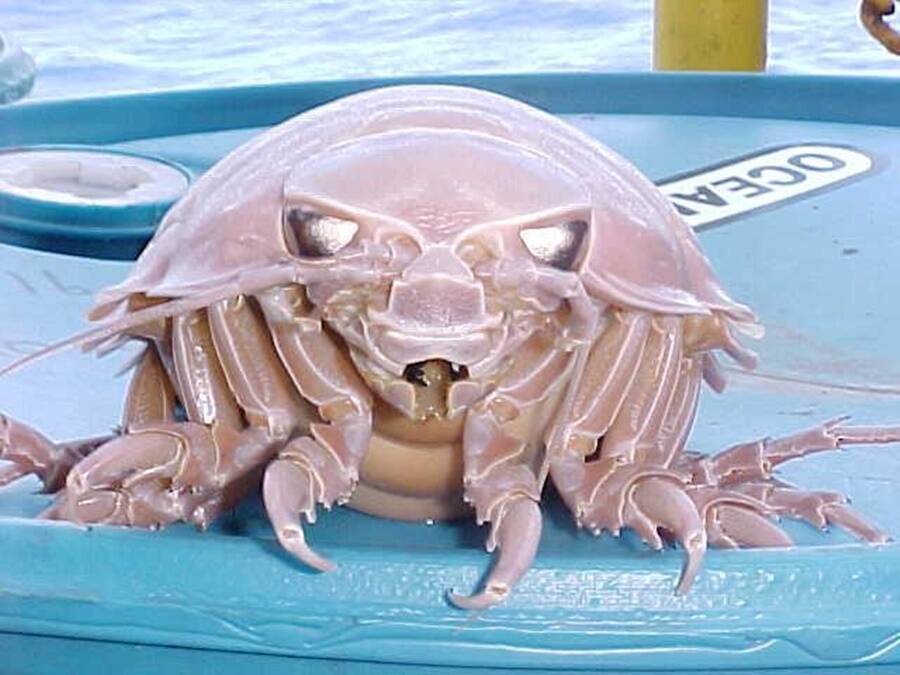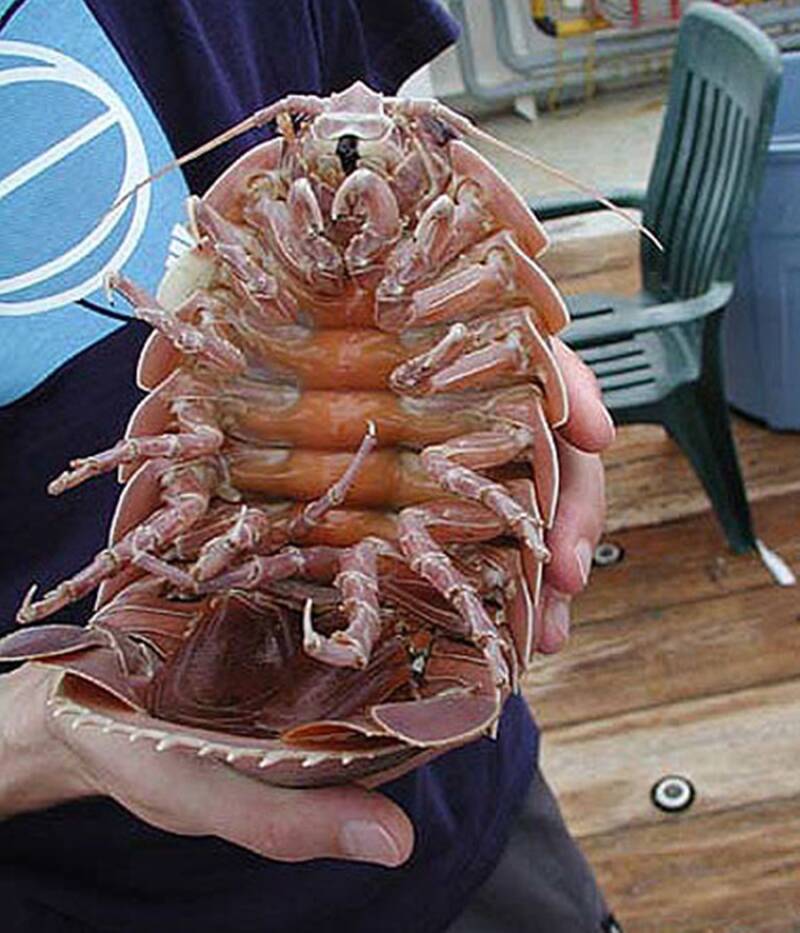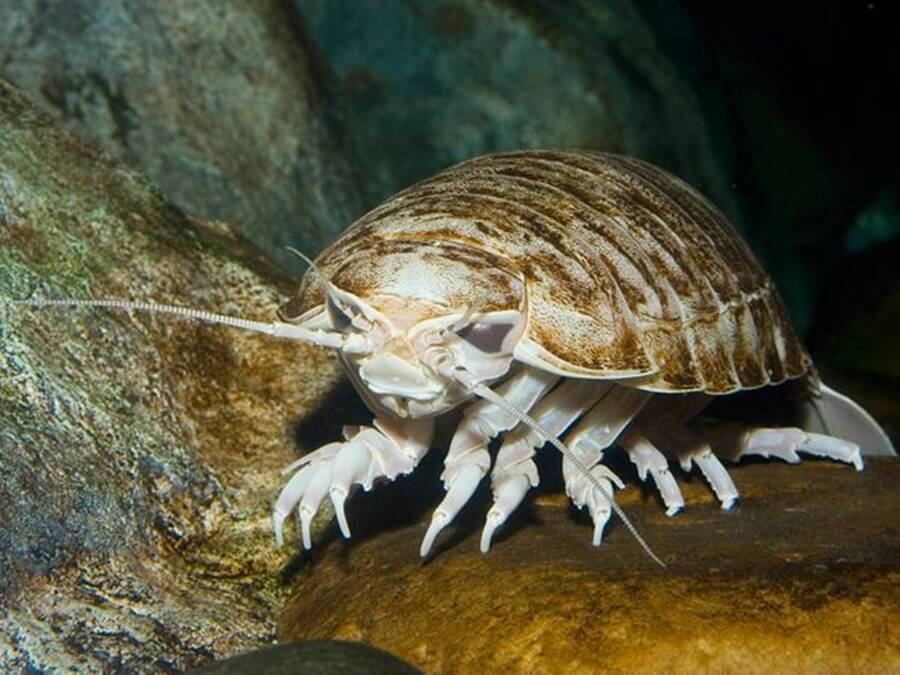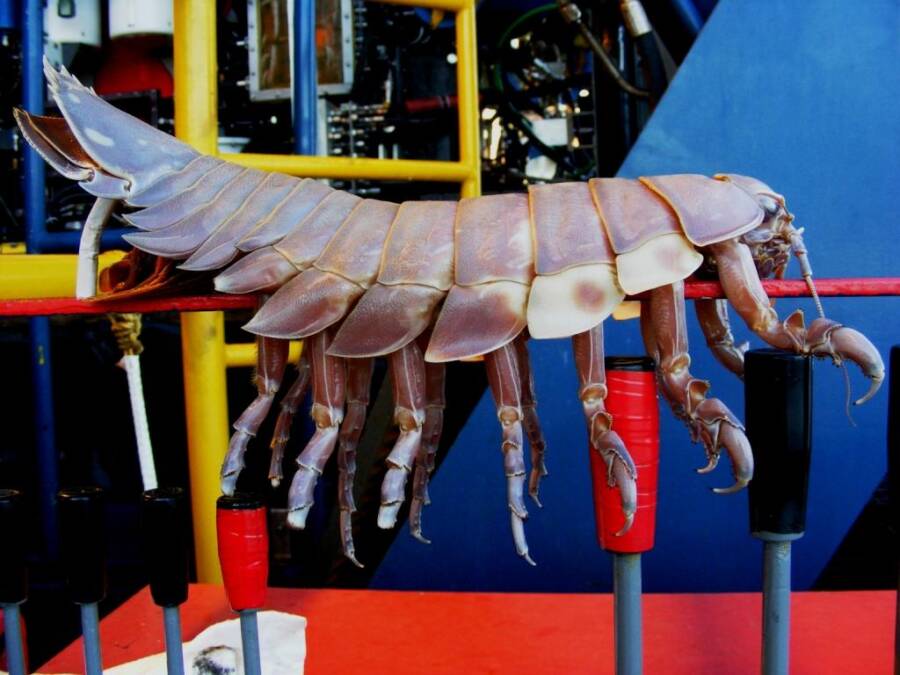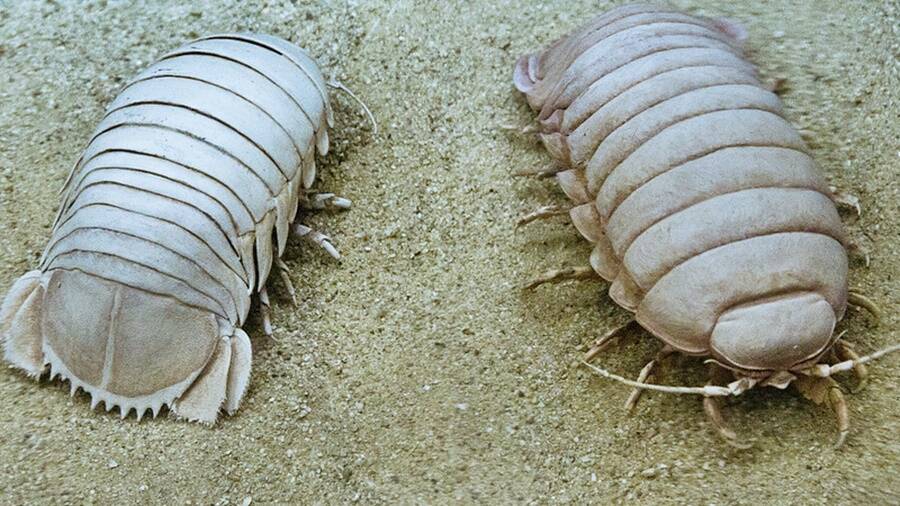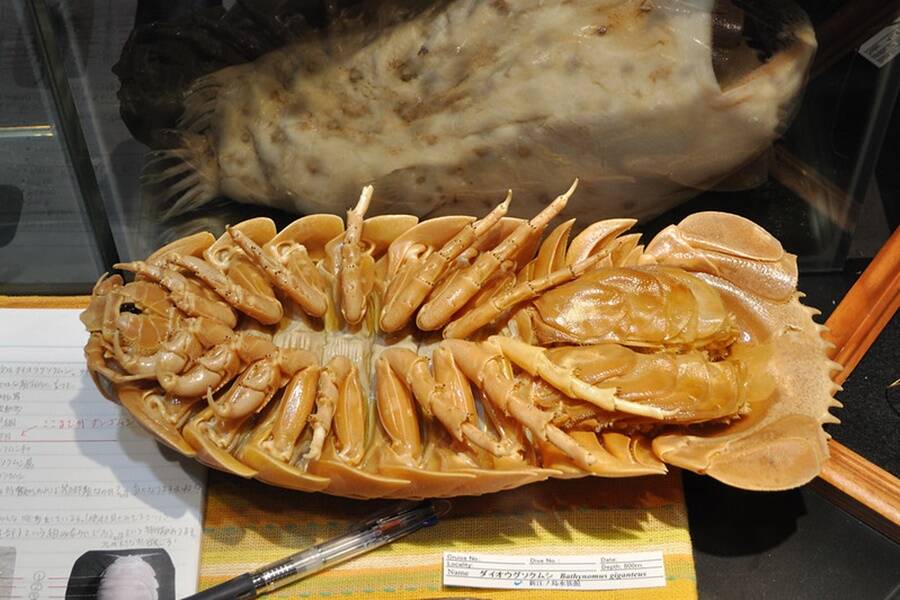Giant Isopods, The Strange Deep-Sea Animals That Look Like Pillbugs
There's perhaps no ecosystem in the world with as many odd creatures as in the deep ocean. With its alien-like appearance and remarkable size, the giant isopod is perhaps one of the weirdest sea animals of them all.
Giant isopods, or Bathynomus giganteus, may look like overgrown cockroaches, but they're actually in the crustacean family. Belonging to the order Isopoda, which includes the land-dwelling pillbug and woodlice, there are over 10,000 species of isopod in the world, 4,500 of which are found in marine environments. However, only 20 species are known within the genus Bathynomus to date.
Unlike their mini-sized land brethren, these strange sea animals typically reach a length between 7.5 and 14.2 inches. Some of the larger species are categorized as "supergiant" isopods and can grow even bigger, reaching up to 20 inches long in body size.
Scientists theorize that their gigantism is an adaptation to the extreme temperatures of its deep-sea habitat, but they don't know for sure exactly why giant isopods grow as large as they do.
One of the largest giant isopods caught on record was a 2.5-foot-long behemoth that was discovered in 2010. The creature had been accidentally brought to the surface after it attached itself onto an underwater remotely operated vehicle (ROV) that had ventured 8,500 feet below the sea.
Giant isopods have 14 insect-like legs on their bodies with two large, reflective eyes. Even more terrifying are their mouths, which boast four sets of jaws, and can easily chomp down on hard shells and carcasses found on the ocean floor.
Like most deep-sea animals, giant isopods are not aggressive. Their oxygen-deprived environment means that they rarely exert energy, even when it comes to feeding. Their slow metabolism allows them to stay in a semi-hibernation state, so they seldom need to feed. Some giant isopods in captivity have been known to survive up to five years without devouring a single meal.
While giant isopods might look like the sea cockroach of your worst nightmare, these weird animals have existed much longer than many of the world's other creatures and can be considered a sort of living fossil. In fact, it's believed that giant isopods date back at least 160 million years.
